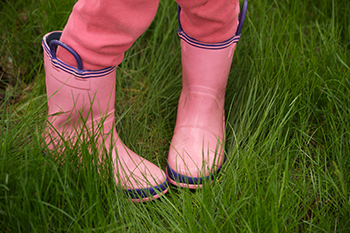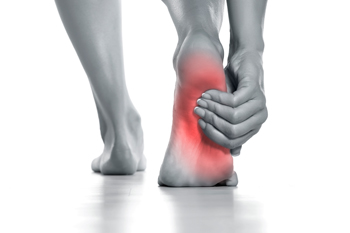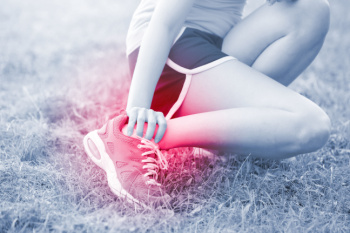Connect With Us
Blog
Items filtered by date: April 2025
Finding Shoes for an Optimal Cycling Experience

Cycling shoes play a vital role in enhancing performance, comfort, and efficiency during rides. Different types are designed for road cycling, mountain biking, and indoor training. Road cycling shoes are typically lightweight with stiff soles for maximum power transfer, while mountain biking shoes offer more traction and flexibility for biking on rough terrain. Shoes made for indoor cycling, often called spinning shoes, are tailored for use on stationary bikes or in cycling studios, featuring a relaxed, sneaker-like design with a breathable build, comfortable fit, and typically a two-bolt cleat system for secure pedal connection. Achieving the right fit is essential, as shoes that are too tight or loose can lead to discomfort or injury. A proper fit includes secure heel support, a snug midfoot, and enough room in the toe box. If you are interested in cycling, it is important to have shoes that fit right. A podiatrist can treat all foot and ankle problems that may arise and guide you better toward choosing the right shoe size and style for a rewarding cycling experience.
Sports related foot and ankle injuries require proper treatment before players can go back to their regular routines. For more information, contact one of our podiatrists of Foot & Ankle Medical Center . Our practitioners can provide the care you need to keep you pain-free and on your feet.
Sports Related Foot and Ankle Injuries
Foot and ankle injuries are a common occurrence when it comes to athletes of any sport. While many athletes dismiss the initial aches and pains, the truth is that ignoring potential foot and ankle injuries can lead to serious problems. As athletes continue to place pressure and strain the area further, a mild injury can turn into something as serious as a rupture and may lead to a permanent disability. There are many factors that contribute to sports related foot and ankle injuries, which include failure to warm up properly, not providing support or wearing bad footwear. Common injuries and conditions athletes face, including:
- Plantar Fasciitis
- Achilles Tendinitis
- Achilles Tendon Rupture
- Ankle Sprains
Sports related injuries are commonly treated using the RICE method. This includes rest, applying ice to the injured area, compression and elevating the ankle. More serious sprains and injuries may require surgery, which could include arthroscopic and reconstructive surgery. Rehabilitation and therapy may also be required in order to get any recovering athlete to become fully functional again. Any unusual aches and pains an athlete sustains must be evaluated by a licensed, reputable medical professional.
If you have any questions please contact our offices located in Nampa and Fruitland, ID . We offer the newest diagnostic and treatment technologies for all your foot and ankle needs.
Types of Ingrown Toenail Surgery

When an ingrown toenail becomes painful, infected, or keeps coming back, a podiatrist may recommend surgery to fix the problem. One common procedure is a partial nail removal, where the podiatrist carefully removes the edge of the nail that is growing into the skin. To help prevent the nail from growing back in the same way, a chemical may be applied to the base of the nail to stop regrowth in that area. This often leads to long-term relief. In more severe cases, especially when the problem keeps returning or involves swelling at the base of the nail, the entire toenail may need to be removed. This procedure may be necessary when a new toenail begins to grow underneath an old one, instead of pushing it forward like it normally should. If you have an extremely stubborn or painful ingrown toenail, it is suggested that you make an appointment with a podiatrist for an exam, diagnosis, and treatment.
Ingrown toenails can become painful if they are not treated properly. For more information about ingrown toenails, contact one of our podiatrists of Foot & Ankle Medical Center . Our practitioners can provide the care you need to keep you pain-free and on your feet.
Ingrown Toenails
Ingrown toenails occur when a toenail grows sideways into the bed of the nail, causing pain, swelling, and possibly infection.
Causes
- Bacterial infections
- Improper nail cutting such as cutting it too short or not straight across
- Trauma to the toe, such as stubbing, which causes the nail to grow back irregularly
- Ill-fitting shoes that bunch the toes too close together
- Genetic predisposition
Prevention
Because ingrown toenails are not something found outside of shoe-wearing cultures, going barefoot as often as possible will decrease the likeliness of developing ingrown toenails. Wearing proper fitting shoes and using proper cutting techniques will also help decrease your risk of developing ingrown toenails.
Treatment
Ingrown toenails are a very treatable foot condition. In minor cases, soaking the affected area in salt or antibacterial soaps will not only help with the ingrown nail itself, but also help prevent any infections from occurring. In more severe cases, surgery is an option. In either case, speaking to your podiatrist about this condition will help you get a better understanding of specific treatment options that are right for you.
If you have any questions, please feel free to contact our offices located in Nampa and Fruitland, ID . We offer the newest diagnostic and treatment technologies for all your foot care needs.
Managing Gait Problems in Children

Gait problems in children often begin with noticeable issues in the feet, toes, or ankles. These may include in-toeing or out-toeing. In-toeing happens when the feet point inward while walking and is often seen in younger children. It may be caused by a curved shape of the foot or the way the leg bones twist inward. Out-toeing, when the feet point outward, is more common in older children and may be due to outward twisting of the leg bones. Some children may also appear flatfooted, meaning the arches of the feet are low or missing, although the foot usually stays flexible. A podiatrist can examine how your child stands and walks to see if their walking pattern falls within normal growth changes. Many children outgrow these issues, but a podiatrist can track their progress to determine if treatment is needed. In rare cases, surgery may be recommended if the gait problem is severe and affects movement. If your child exhibits an unusual or abnormal gait, it is suggested that you schedule an appointment with a podiatrist for an exam, diagnosis, and appropriate treatment.
The health of a child’s feet is vital to their overall well-being. If you have any questions regarding foot health, contact one of our podiatrists of Foot & Ankle Medical Center . Our practitioners can provide the care you need to keep you pain-free and on your feet.
Tips for Keeping Children's Feet Healthy
- Make sure their shoes fit properly
- Look for any signs of in-toeing or out-toeing
- Check to see if they have Clubfoot (condition that affects your child’s foot and ankle, twisting the heel and toes inward) which is one of the most common nonmajor birth defects.
- Lightly cover your baby’s feet (Tight covers may keep your baby from moving their feet freely, and could prevent normal development)
- Allow your toddler to go shoeless (Shoes can be restricting for a young child’s foot)
- Cut toenails straight across to avoid ingrown toenails
- Keep your child’s foot clean and dry
- Cover cuts and scrapes. Wash any scratches with soap and water and cover them with a bandage until they’ve healed.
If you have any questions, please feel free to contact our offices located in Nampa and Fruitland, ID . We offer the newest diagnostic and treatment technologies for all your foot care needs.
Sources of Foot Pain

Foot pain can stem from plantar fasciitis, tendonitis, bunions, or arthritis. Plantar fasciitis causes sharp pain in the heel, particularly with the first steps in the morning. Tendonitis involves inflammation of the tendons, leading to pain, swelling, and limited movement, often affecting the arch or back of the foot. A bunion is a bony bump at the base of the big toe, making it painful to wear shoes and walk. Arthritis in the foot causes joint pain, stiffness, and swelling, often worsening with activity. The causes of foot pain vary, but common factors include overuse, wearing improper footwear, abnormal foot structure, or aging. Symptoms often include swelling, tenderness, and difficulty moving or bearing weight on the affected foot. A podiatrist can assess your symptoms and provide treatment options, including targeted exercises, custom orthotics, medication, or surgery, if needed. If you have ongoing foot pain, it is suggested that you schedule an appointment with a podiatrist.
Foot Pain
Foot pain can be extremely painful and debilitating. If you have a foot pain, consult with one of our podiatrists from Foot & Ankle Medical Center . Our practitioners will assess your condition and provide you with quality foot and ankle treatment.
Causes
Foot pain is a very broad condition that could be caused by one or more ailments. The most common include:
- Bunions
- Hammertoes
- Plantar Fasciitis
- Bone Spurs
- Corns
- Tarsal Tunnel Syndrome
- Ingrown Toenails
- Arthritis (such as Gout, Rheumatoid, and Osteoarthritis)
- Flat Feet
- Injury (from stress fractures, broken toe, foot, ankle, Achilles tendon ruptures, and sprains)
- And more
Diagnosis
To figure out the cause of foot pain, podiatrists utilize several different methods. This can range from simple visual inspections and sensation tests to X-rays and MRI scans. Prior medical history, family medical history, and any recent physical traumatic events will all be taken into consideration for a proper diagnosis.
Treatment
Treatment depends upon the cause of the foot pain. Whether it is resting, staying off the foot, or having surgery; podiatrists have a number of treatment options available for foot pain.
If you have any questions, please feel free to contact our offices located in Nampa and Fruitland, ID . We offer the newest diagnostic and treatment technologies for all your foot care needs.
Causes of Achilles Tendon Injuries

An Achilles tendon injury occurs when the tendon that connects the calf muscles to the heel becomes strained, inflamed, or torn. This tendon plays a vital role in walking, running, and jumping. Injuries may develop gradually due to repetitive stress or suddenly from excessive force. Common causes include overuse, wearing improper footwear, sudden increases in physical activity, and inadequate warm-ups before exercise. Engaging in high-impact activities, such as basketball or running, can place significant strain on the tendon. Having tight calf muscles or structural foot imbalances may also contribute to added stress on the tendon. If you experience pain in the lower part of your calf, it is suggested that you consult a podiatrist who can accurately diagnose and provide appropriate treatment for Achilles tendon injuries.
Achilles tendon injuries need immediate attention to avoid future complications. If you have any concerns, contact one of our podiatrists of Foot & Ankle Medical Center . Our practitioners can provide the care you need to keep you pain-free and on your feet.
What Is the Achilles Tendon?
The Achilles tendon is a tendon that connects the lower leg muscles and calf to the heel of the foot. It is the strongest tendon in the human body and is essential for making movement possible. Because this tendon is such an integral part of the body, any injuries to it can create immense difficulties and should immediately be presented to a doctor.
What Are the Symptoms of an Achilles Tendon Injury?
There are various types of injuries that can affect the Achilles tendon. The two most common injuries are Achilles tendinitis and ruptures of the tendon.
Achilles Tendinitis Symptoms
- Inflammation
- Dull to severe pain
- Increased blood flow to the tendon
- Thickening of the tendon
Rupture Symptoms
- Extreme pain and swelling in the foot
- Total immobility
Treatment and Prevention
Achilles tendon injuries are diagnosed by a thorough physical evaluation, which can include an MRI. Treatment involves rest, physical therapy, and in some cases, surgery. However, various preventative measures can be taken to avoid these injuries, such as:
- Thorough stretching of the tendon before and after exercise
- Strengthening exercises like calf raises, squats, leg curls, leg extensions, leg raises, lunges, and leg presses
If you have any questions please feel free to contact our offices located in Nampa and Fruitland, ID . We offer the newest diagnostic tools and technology to treat your foot and ankle needs.
